
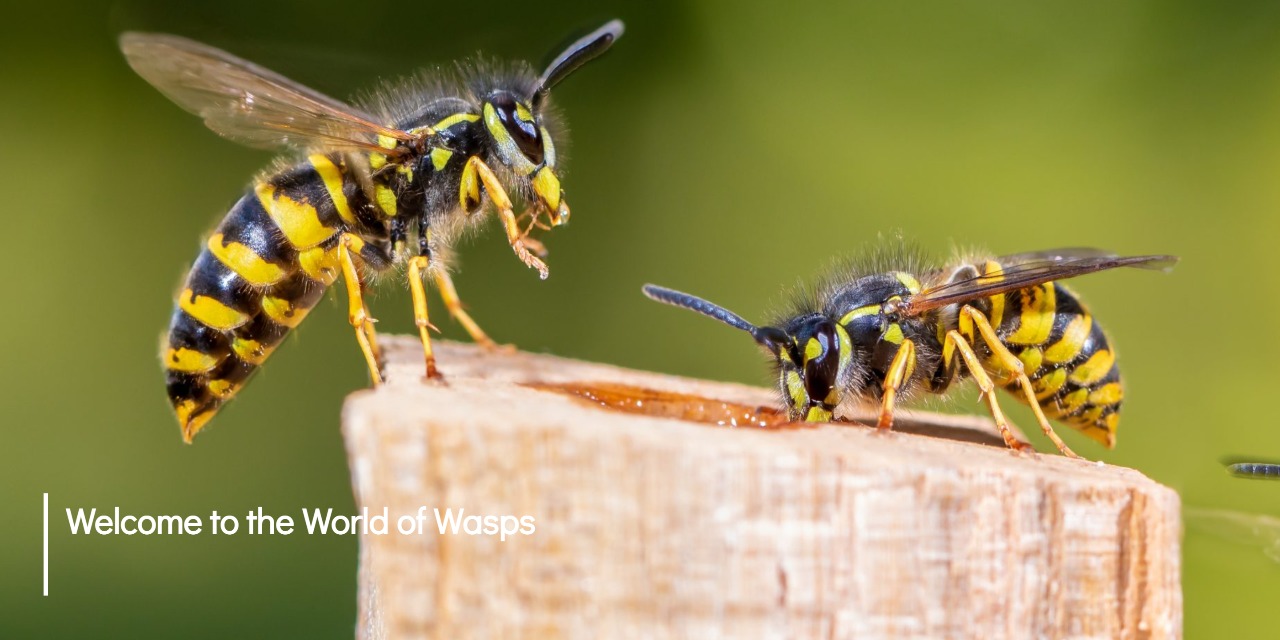


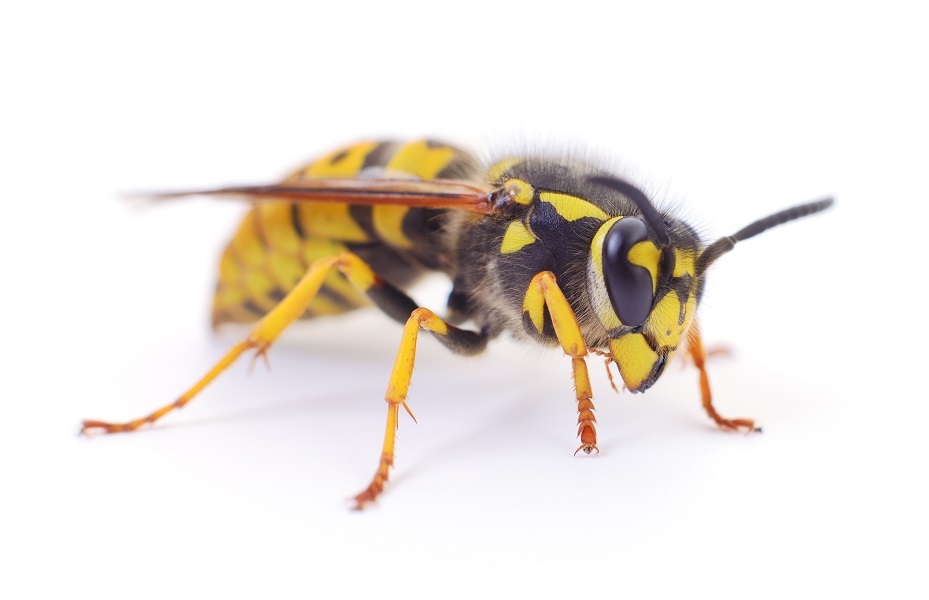
more than you know
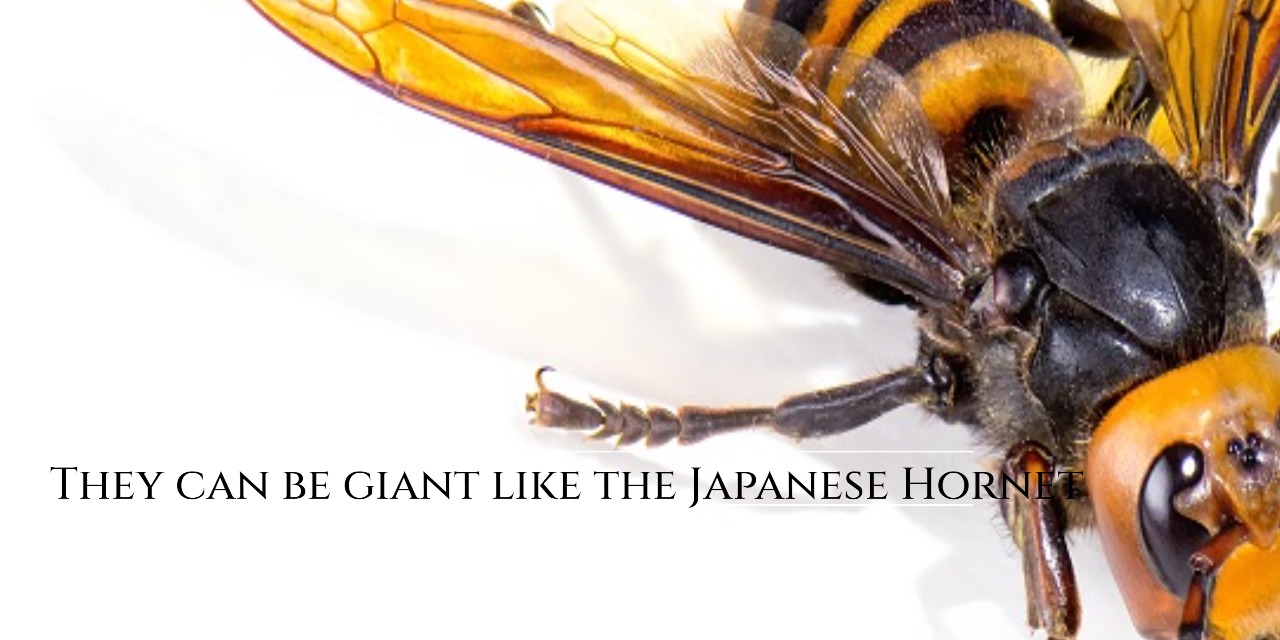
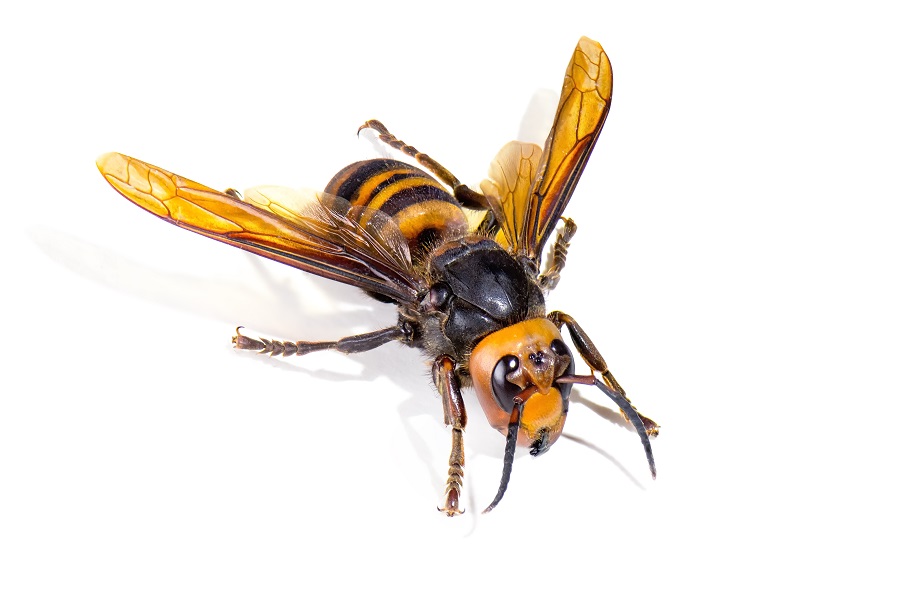
like the Japanese Hornet
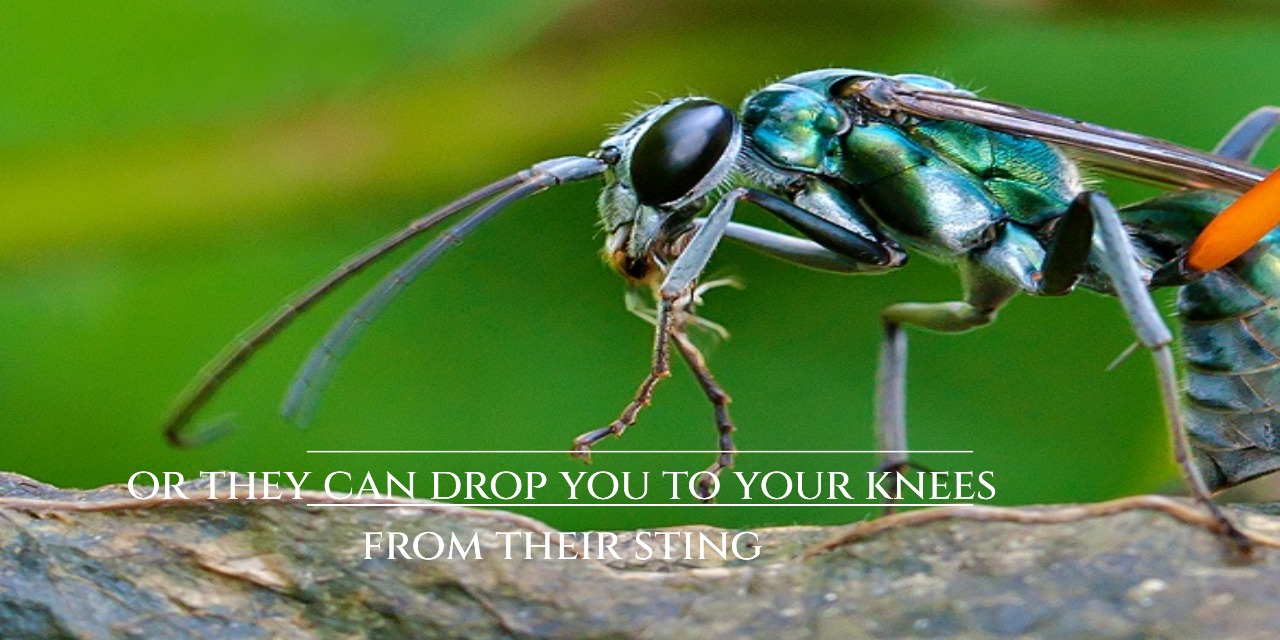

from the power of their sting
What are Wasps?
Wasps are in the same family as saw flies, bees, bumble bees, parasitic wasps, paper wasps, mud wasps, social wasps, and ants.
Together, they are the third largest group of insects – after beetles and butterflies.
The wasp family is known as HYMENOPTERA
This is made from two Greek words: hymen-o-ptera, which means married wings – two on each side, connected by a series of hooks, called hamuli or sometimes called the frenulum.
They have a very narrow waist between their thorax and their abdomen.

The largest wasp in the world is the giant Japanese Hornet

As well as being incredibly painful, the venom from the Japanese hornet is so potent that with just a few stings it has been known to kill humans.
These hornets are literally bee hive killers, as most domestic honey bees make easy targets for them to pick off one by one.
The second most painful insect sting in the world belongs to the tarantula hawk wasp.

If you are stung by this gigantic wasp, it can drop you to your knees in what is described as “instant electrifying pain” – Justin Smidtt.
It needs a potent sting as well. Its chosen food source for its offspring are as its name suggests, tarantulas.
Their battles are swift and full of danger, but most of the time she will win, sting the tarantula, and lay an egg on it that will hatch into a grub and eat the tarantula alive!
They can be microscopic, like the fairy flies.

The smallest insect in the world is the fairy fly – which is actually a wasp.
They are so small that they live by parasitising eggs of other small insects.
Their lives as adults are incredibly short, sometimes only a day.
Many wasps are social and live in colonies, or nests made out of paper.

Wasp nests start out as a tiny egg cup sized umbrella with three or four cells, inside of which the first grubs are hatched and fed. Once they are mature, they fly off and forage and take over the building of the nest and the queen focusses on egg laying.
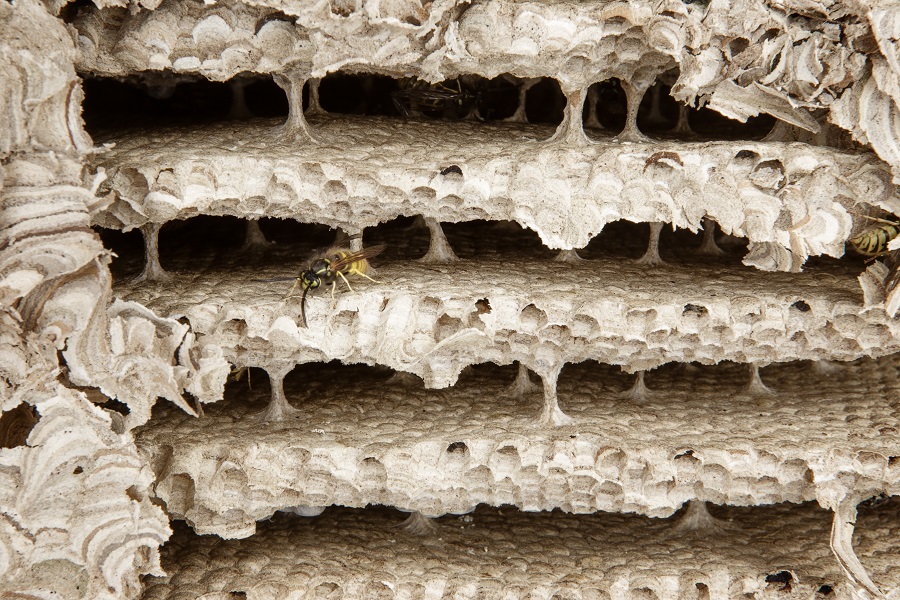
Large nests can contain many layers of delicate hexagonal paper cells and up to ten thousand wasps. In America and other warmer countries, the nests keep going and can have multiple queens and even hundreds of thousands of workers. These nests are very dangerous.
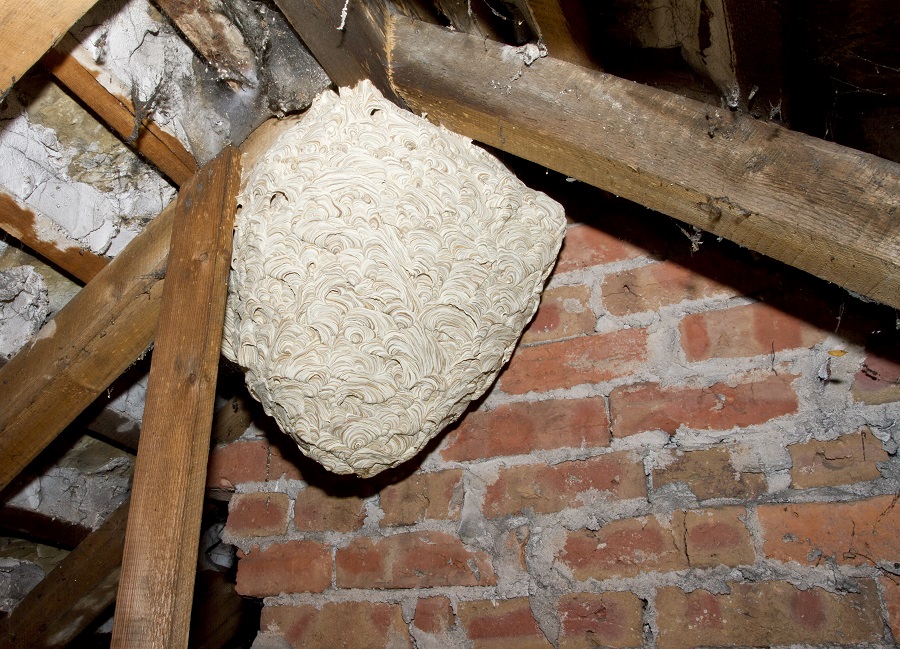
Wasps nest in a variety of places. It all depends upon where the emerging queen wasp choses to build. Sometimes they are in a loft, where they can grow to quite a size, sometimes they are built underground.
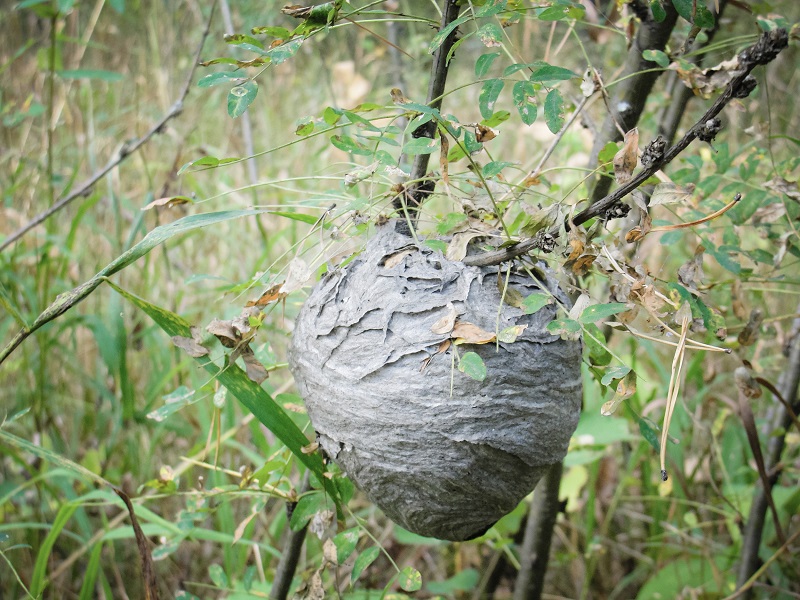
Asian hornet nests are always made in bushes. If you see them, you must contact your local authority who will arrange for them to be professionally removed – do not attempt to do this yourself.
Don’t confuse this nest with our scarce native tree wasp which nests a lot higher up and builds a smaller nest.
The largest of the native UK species of wasp is the European hornet, Vespa crabro, with lengths up to 2.4 cm.
Although the sting can be painful, these are generally gentle giants, preferring to go about their business of hunting for food to feed their brood and drinking sweet fruit and plant juices and nectar from easy to get to flowers.
Unlike their smaller wasp cousins, they are not likely to attack you, unless of course you disturb their nesting sites.
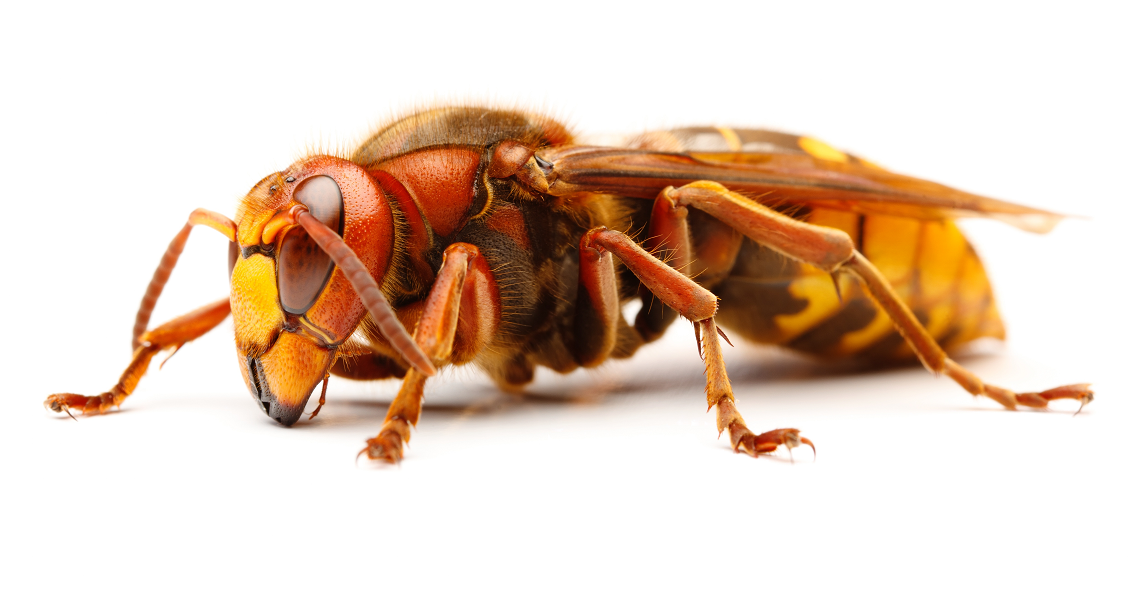
In the UK, there are approximately 9000 species of wasp (saw fly, parasitic, solitary and social) with the commonest social species being Vespula vulgaris (common wasp) and Vespula germanica (German wasp).
We do have a few more wasps that live in big colonies (eusocial wasps) in the form of Vespula rufa – the red wasp, Dolichovespula media – the Norwegian wasp, Dolichovespula saxonica – the saxon wasp, and Dolichovespula sylvestris – the tree wasp. Each of these are distinguishable from one another by examining their malar spaces, and colouration and patterning of the abdomen. Telling the difference between V. germanica and the common wasp is easy with markings, as well as the smaller V. vulgaris.
German Wasp
Vespula germanica

Common Wasp
Vespula vulgaris
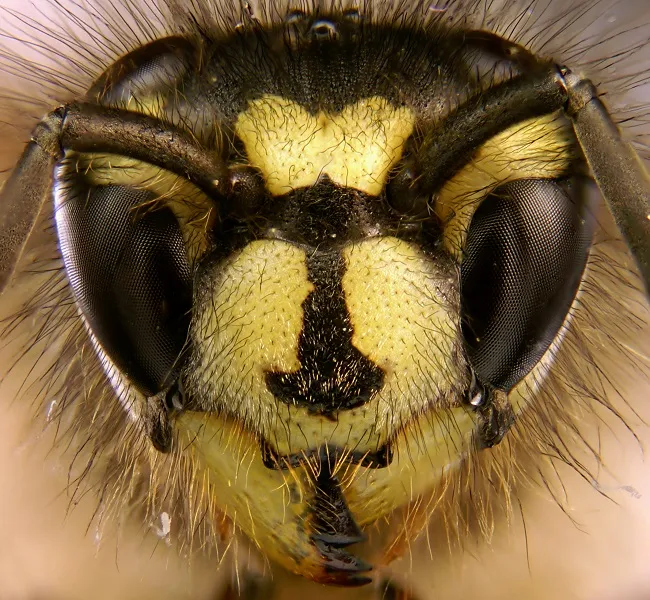
Tree Wasp
Dolichovespula silvestris
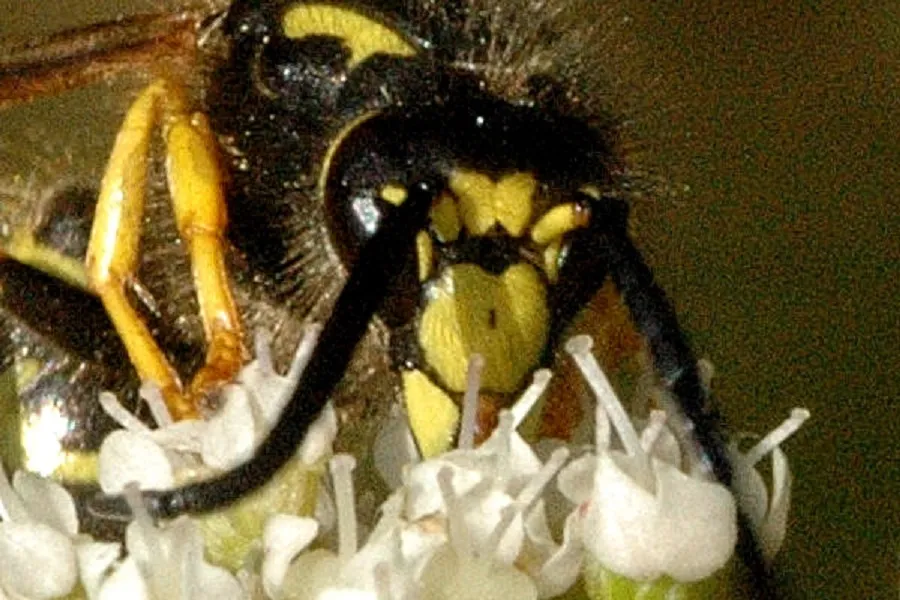
Red Wasp
Vespula rufa
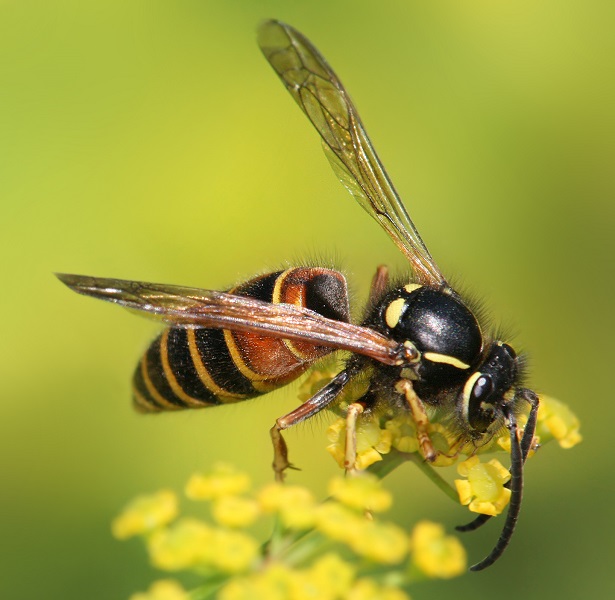
Norwegian Wasp
Dolichovespula media
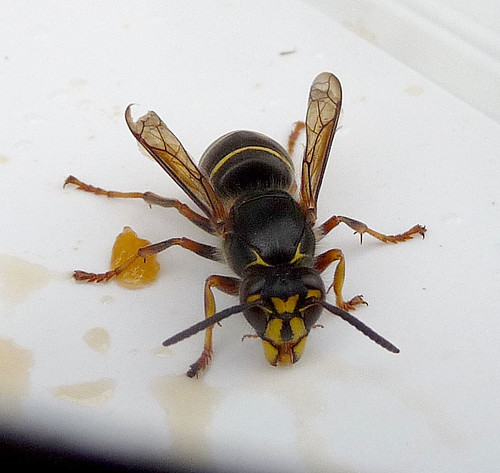
Saxon Wasp
Dolichovespula saxonica
